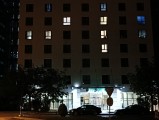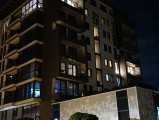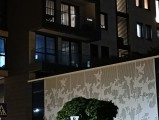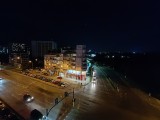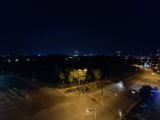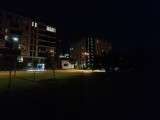Realme 11 Pro+ review

200MP camera on a budget
The Realme 11 Pro+ has a triple-camera setup on its back and a single camera at the front. Both the primary and selfie shooters have been upgraded with new high-res sensors - a 200MP Samsung HP3 for your regular photos and a 32MP imager for selfies.

The primary camera on the Realme 11 Pro+ features the 200MP Samsung ISOCELL HP3 1/1.4" sensor with 0.56µm pixels. It sits behind an f/1.69 23mm lens, supports Super QPD autofocus, and there is Super OIS. The latter is a term for hardware-level OIS with 3° EDR OIS Algorithm that offers 40% increase in lens reset speed. Additionally, there is 4-axis gyro-based stabilization.
The 'Super QPD' autofocus is Samsung's way of saying it can detect phase changes in both the horizontal and vertical direction, giving you more dependable autofocus across a wider range of subjects and use cases.
The new Samsung sensor allows for 2x and 4x lossless zoom in photos and features like Auto Zoom, where the camera auto zooms and crops on a subject and tries to keep it at the center of your frame, so you don't need to move your phone frantically when taking photos. The improved stabilization also enables handheld Starry Sky mode.
The main camera supports high-res shooting in 200MP and in 50MP.
The ultrawide camera uses an 8MP Sony IMX 355 sensor behind a 16mm f/2.2 lens. There is no autofocus. Night Mode works on this camera, too.
The third and final camera on the back is the macro one with either a 2MP OmniVision OV02B or a 2MP GalaxyCore GC02M1 sensor with an f/2.4 aperture lens and a fixed focus at 4cm. This camera cannot capture videos, and there is no Night Mode.

The selfie camera uses a 32MP Sony IMX 615 1/2.8" Quad-Bayer sensor with 0.8µm pixels and a 21mm f/2.45 lens. The focus is fixed, naturally. This camera has a wide-angle lens, wider than usual, and it can zoom in/out depending on the scene, and there are 0.8x (default) and 1x (cropped view) shortcuts.
Camera app
The camera app is the familiar Oppo/Realme one. There are fewer menus - most of the modes are now on the main rolodex, which is good.

The viewfinder in the default Photo mode offers AI Scene Enhancement (also known as Chroma Boost or Dazzle Color) - it's like an advanced HDR mode, which may stack several images to offer even further improvements in the dynamic range. Still, the most prominent "improvement" is the higher color saturation. Auto HDR is available, too.
There are also four zoom shortcuts - 0.6x, 1x, 2x, and 4x.
You can use both the main and the ultrawide camera in the Pro mode; you get to tweak exposure (ISO in the 100-8000 range and shutter speed in the 1/8000s-30s range), white balance (by light temperature, but no presets), manual focus (in arbitrary 0 to 1 units with 0 being close focus and 1 being infinity) and exposure compensation (-2EV to +2EV in 1/6EV increments). RAW is available only on the main camera.
There is also a Street mode, where you can try some automatizations like Auto zoom and various filters. The Auto zoom crops on a selected subject and tries to keep it at the center of your frame, so you don't need to move your phone frantically when taking photos.
Daylight photo quality
The main camera saves 12.5MP photos in its default Photo Auto mode. The ones we took in broad daylight are easily flagship-grade. The resolved detail is plenty, there is no noise, we can praise the contrast, and the dynamic range is great but not unnaturally wide.
The colors are true to life, and the overall presentation is quite nice.
The daylight samples are quite similar in quality to the ones you'd get from a Galaxy S23 Ultra. This is enough to convince you that the Realme 11 Pro+ takes excellent photos with its main camera, rivaling the most expensive offers on the market. (And there are others that may say the Galaxy S23 Ultra is overpriced and overhyped, but that's not the point of this review.)
All photos have this slightly overprocessed look - like they were first over-sharpened and then smoothened to mask this. This is a common thing shared by many flagships, and while we do acknowledge it may not be everyone's cup of tea, it is still a flagship-grade quality preferred by many.
Moving on to the 2x zoom, something that Realme claims to be of lossless quality. And the photos we took are indeed great! They are rich in detail, well maybe not as rich as the default output, but close, and the rest of their properties - noise reduction, contrast, dynamic range, color rendition - are a match to the 1x zoomed images.
The 2x zoomed photos are made by cropping the 12.5MP center from the 50MP high-res image, and some of them may come with blurred moving subjects (people, leaves) as the 50MP photo requires some image stacking.
The 4x zoom is not lossless, but it's not a mere digital upscaling either. In fact, we have every reason to believe that it's a 12.5MP crop from the center of the 200MP high-res image, and the photos do look good.
The level of detail across the 4x zoomed photos is acceptable, it's higher than what a digital zoom would have offered. There is a lot of visible noise, too, but not to an overwhelming extent. And the colors are realistic, the contrast is good, and the dynamic range is quite wide.
We appreciate the 4x zoom effort by Realme, and while it's not perfect, it's the best it could have been done with the technology at hand.
And speaking of the 200MP output, here are some samples. They do look artificial as they have been achieved by complex algorithms, there is no processing done (like noise reduction, color correction, HDR, etc.), and there is a ton of noise, but this is where the 4x zoom comes, and we'd say they are rather usable.
You can also shoot in 50MP instead of 200MP, and this is how the 2x zoom is done. The 50MP samples are enhanced, and they are detailed, sharp, with a wide dynamic range and accurate colors. There is no visible noise here.
The Portrait mode defaults to 2x zoom, and the portraits we took at this magnification level are great. The subject's rendition is good, the detail is acceptable, the colors are realistic, and the dynamic range is wide, boosted by the Auto HDR. Note that if the light is not ideal, the portraits will come out noisy and soft.
The subject separation is proficient, and the background blur is convincing.
The 1x zoomed portraits are as good as the 2x ones, but a bit more detailed. And if the light is not ideal, those would still come rather good, unlike the 2x zoomed photos.
The 8MP photos from the ultrawide camera are of excellent quality, considering the budget nature of this camera. Their rendition and processing are a match to the main camera, down to the watery look, excluding the resolution, of course.
The ultrawide photos we took on this sunny day are great - the resolved detail is enough, there is no visible noise, and the corners are proficiently straightened. The contrast is great, too; the dynamic range is just right, and the colors are slightly more saturated but quite nice, nevertheless.
The 2MP macro photos are rather poor - their detail is mediocre, there is visible noise, and the colors are sometimes a bit desaturated. We cannot imagine many people using this camera often, if ever.
The selfie camera got an update on the Realme 11 Pro+ - it now uses a 32MP sensor, up from 16MP. It's still a Quad-Bayer imager, one that saves 32MP photos instead of 8MP.
The front camera has a wide-angle lens, and that's why you will see 0.8x (21mm) and 1x (26mm) zoom shortcuts. The 1x zoom crops and upscales from the default 21mm output.
Well, the 32MP selfies are very good. They have good detail when there is no HDR, and are acceptable when Auto HDR had triggered. The noise reduction is good, the colors are very pleasant, and the dynamic range is always wide.
We would have been happy with the 8MP selfies instead of the 32MP "unbinned" ones, but even as is - the selfie camera is a solid performer.
Low-light photo quality
The Realme 11 Pro+ camera supports Auto Nightscape. It works the same way as on other phones - when the light conditions are poor, you will see a small moon icon appear on the viewfinder - this means the photo will be shot with the help of Nightscape. If you don't want that, just tap on the moon icon to disable it.
The Auto Nightscape works only on the main camera at 1x zoom and the ultrawide camera. The moon disappears when you switch to 2x-4x zoom.
The photos shot on the main camera with Auto Nightscape are superb - they are bright and well exposed, with wide dynamic range, pleasant color saturation, and free of noise. The resolved detail is not that great, but it's far from poor, too.
Turning the Nightscape OFF will lead to slightly more detailed and sharper photos, but one with a narrower dynamic range and many blown highlights.
The 2x zoomed photos we took with Auto Nightscape had no Night Mode involved whatsoever, as we established. They are pretty great, too, excluding the average detail. The lossless zoom is still at play here unless the light is extremely poor, and it tries its best to save a detailed photo. And often, it succeeds indeed.
You can go to Nightscape and use 2x zoom there, but the photos are very artificial and somewhat unpleasant. They are brighter and with wider dynamic range, but they are quite poor in detail as the lossless zoom is no longer at play here.


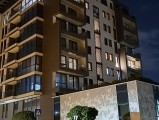

Main camera 2x zoom, Night Mode ON
The 4x zoomed photos at night seem to be upscaled from the 2x ones judging by their halved detail. They are usable but far from great, especially at 100% zoom.
The 8MP ultrawide photos shot with the help of Auto Nightscape are usable for sure, but that's the best we can say about them. The Nightscape mode allowed the photos to keep an acceptable level of detail and tolerable noise; the color saturation is okay, too, and so is the dynamic range.
Turning off the Nightscape mode will save more detailed photos, but also darker, with narrower dynamic range and sometimes slightly desaturated colors.

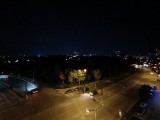

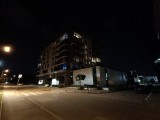
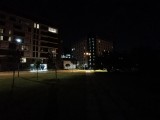


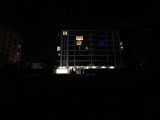

Ultrawide camera, Night Mode OFF
We've noticed the Auto Nightscape chooses shorter "shutter" times compared to the dedicated Nightscape one. So, if you want even brighter ultrawide photos, and sometimes with lower noise, opting for the Nightscape mode on the rolodex will do it.

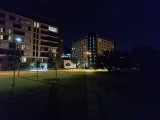


Ultrawide camera, Night Mode ON
We also shot a couple of Starry Sky (handheld) and Light Trails (tripod) photos for you to enjoy. All of them look pretty good. There is also a Moon mode, but unfortunately, the Moon was not visible in the night sky during the single clear night we had this week.


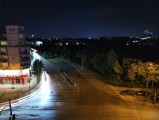

Starry Sky • Starry Sky • Light trails • Light trails
And here's how the main camera stacks up against the competition in our extensive Photo compare database.


Realme 11 Pro+ against the Redmi Note 12 Pro+ and the Galaxy A54 in our Photo compare tool
Video quality and stabilization
The Realme 11 Pro+ captures videos with all but the macro cameras. The main camera records video up to 4K at 30fps, and there's 1080p at both 30fps and 60fps. The ultrawide and the selfie shooters are limited to 1080p@30fps video capturing.
There is also an Ultra Stable option available on the Realme 11 Pro+, which uses the main camera with 1080p@60fps and heavily crops, so it can achieve action camera-like footage.
You can choose between the h.264 and h.265 codecs.
Electronic stabilization is always-on for the rear cameras and optional for the selfie one, but it doesn't work in 4K resolution.
The camera app is super generous with the bit rates - the 4K footage gets 50Mbps while 1080p/30fps is allocated a similarly above-average 20Mbps when using the h.264 codec. The audio bitrate is 256Kbps, the sound is stereo.
The 4K videos from the main camera are top-notch - they offer incredibly high resolved detail, zero noise, outstanding color presentation, and a wide dynamic range. We liked the overall look of the foliage and the buildings - everything looks natural.
Great quality was to be expected as there is no electronic stabilization at 4K resolution, meaning there is no cropping and upscaling on the go.
The stabilization works perfectly at 1080p resolution, though.
The low-light videos from the main camera are also great - they are bright, colorful, detailed, and with low noise. The dynamic range is a bit wider than expected, too.
There is a 2x zoom shortcut when taking videos, but it provides digital zoom, and the footage has half the level of detail.
The ultrawide camera shoots excellent 1080p daylight videos - they are detailed enough, with proficient rendition and lively color saturation. There is no noise, at least in good light.
The EIS works great on the ultrawide camera, as expected.
Finally, the 1080p stabilized selfie videos look good - the detail and the overall sharpness are okay, the colors are realistic, and the dynamic range is enough for the selfie purposes. Sure, we've seen better selfie videos, but we've seen far worse, too.
Here's how the Realme 11 Pro+ compares to other devices in our vast video compare database.


Realme 11 Pro+ against the Redmi Note 12 Pro+ and the Galaxy A54 in our Video compare tool
Reader comments
- Jonathan
- 19 Jun 2024
- thw
I have a problem when using camera in hot day time (outdoor) and the screen is exposed to sun. The body will heat up so fast (mainly in upler area which camera located). Just less in 5 minutes the screen become dark and I can barely seen the pict...
- Dusan
- 28 Apr 2024
- 0w7
How its possible that I get 200mpx shot with resolution of 12240x16320 using street mode without any zoom, I was exploring camera for over a year and I still cannot figure out how it sometimes decides to take picture like that, and color reprodu tikn...
















































































































